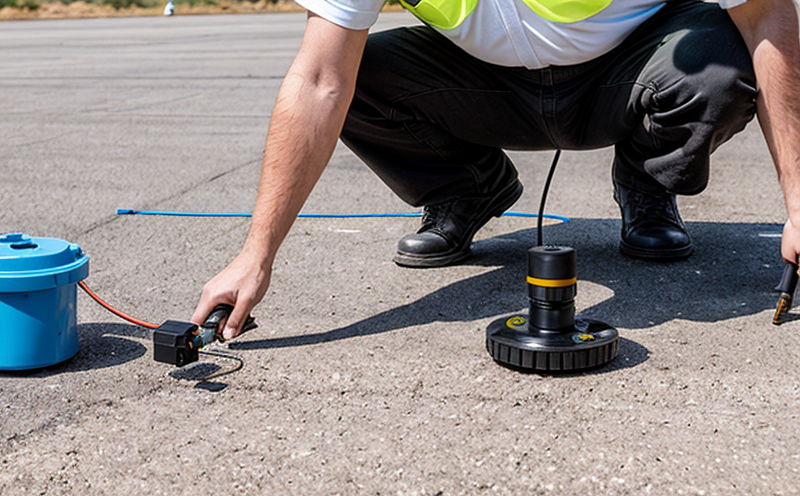Sensor calibration inspection
Ensuring accurate and reliable sensor performance is critical in electrical and electronic systems. Sensor calibration inspection involves the systematic process of verifying, adjusting, or re-establishing the relationship between the input quantity (measured variable) and its corresponding output quantity (displayed value). This service ensures that sensors maintain their accuracy over time, which is vital for the proper functioning of a wide array of electrical and electronic systems in various sectors.
Calibration plays an essential role in maintaining compliance with international standards such as ISO 17025. For instance, when calibrating temperature sensors used in industrial control systems or HVAC applications, it ensures that the system accurately reflects environmental conditions, which can prevent operational inefficiencies and costly errors. Similarly, in medical devices where precise measurements are crucial for patient safety, accurate calibration is non-negotiable.
The process of sensor calibration inspection typically involves several key steps. First, a reference standard or traceable instrument is used to measure the output of the sensor under known input conditions. The results are compared against the expected values derived from the manufacturer's specifications or industry standards. Any discrepancies between actual and expected outputs highlight areas requiring adjustment.
Once identified, adjustments can be made using specialized calibration tools designed specifically for each type of sensor. These may include electronic calibrators that apply known signals to the sensor, allowing technicians to fine-tune its response until it meets specified tolerances. After completing these adjustments, further testing ensures that all performance parameters fall within acceptable limits.
It's important to note that not all sensors require regular recalibration; some may only need occasional checks depending on usage patterns and environmental factors. However, implementing a robust calibration schedule helps ensure long-term reliability and accuracy of sensor readings across various applications in the electrical and electronic systems sector.
| Applications | Tolerances |
|---|---|
| Industrial Automation | ±0.5% of full scale |
| Medical Devices | ±1% of full scale |
| Environmental Monitoring | ±2% of full scale |
The accuracy and precision of sensors have significant implications for downstream processes within electrical and electronic systems. For example, inaccurate temperature sensing could lead to improper heating or cooling cycles in air conditioning units, resulting in higher energy consumption and reduced system efficiency.
By investing in regular sensor calibration inspections, organizations can mitigate risks associated with poor measurement accuracy while simultaneously enhancing overall operational performance. This proactive approach contributes significantly towards maintaining regulatory compliance and fostering trust among stakeholders who rely on reliable data from these systems.
Industry Applications
- Automotive manufacturing lines where precise measurement of fuel levels is necessary for efficient production processes
- Aviation industry ensuring accurate altitude readings during flight operations to enhance safety standards
- Retail stores using weight sensors in scales for inventory management and customer service
- Telecommunications networks requiring stable signal strength indicators for optimal communication performance
| Sensor Type | Calibration Frequency |
|---|---|
| Thermocouples | Anually or bi-annually depending on usage frequency and environment |
| Piezoelectric sensors | Every three months to six months, more frequently for high vibration environments |
| Inertial measurement units (IMUs) | Quarterly calibrations with periodic checks between full calibration cycles |
Sensors play a pivotal role in many industries by providing critical data that informs decision-making processes. From automotive manufacturing to telecommunications, accurate sensor readings are essential for maintaining optimal performance and ensuring product quality.
International Acceptance and Recognition
The importance of sensor calibration inspection extends beyond just local standards; it also plays a crucial role in meeting international requirements set by organizations like the International Organization for Standardization (ISO).
ISO 17025, which governs the competence of testing and calibration laboratories, emphasizes the need for rigorous calibration practices to ensure consistency across different regions. Compliance with these standards guarantees that results obtained from sensor calibration inspections are universally accepted and comparable.
In addition to ISO accreditation, many countries have their own regulatory bodies overseeing electrical and electronic systems. For example, in Europe, conformity assessments under directives like RoHS (Restriction of Hazardous Substances) and REACH (Registration, Evaluation, Authorization, and Restriction of Chemicals) require accurate sensor measurements for compliance verification.
By adhering to these international standards and obtaining relevant certifications, laboratories offering sensor calibration inspection services can demonstrate their commitment to quality assurance and reliability. This not only builds customer confidence but also facilitates smoother interactions between trading partners internationally.
Environmental and Sustainability Contributions
Incorporating sensor calibration inspection into operational protocols contributes positively to environmental sustainability efforts. By ensuring accurate monitoring of resource usage such as electricity, water, or gas, organizations can identify areas for improvement in energy efficiency.
For instance, accurately calibrated HVAC systems help reduce unnecessary heating and cooling cycles, leading to lower greenhouse gas emissions associated with power generation. Similarly, precise measurement of raw material consumption in manufacturing processes allows companies to optimize resource usage, thereby minimizing waste generation.
Besides direct environmental benefits, implementing robust calibration practices also supports broader sustainability goals by fostering innovation through continuous improvement initiatives. Organizations that prioritize accurate sensor performance often find opportunities to develop more efficient products and services, contributing to a greener economy overall.





